
views
Treating an Episode of Diverticulitis
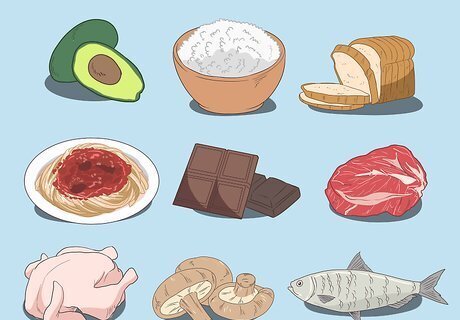
Consume a liquid, low-fiber diet. One of the possible causes of diverticulitis is the consumption of small, inadequately chewed and difficult-to-digest foods like seeds, corn, and berries. These get caught in the diverticula of the intestine and feed a bacterial colony, sometimes causing infection. If experiencing an episode of diverticulitis, it is best to avoid any foods which might worsen the infection. This means avoiding fiber (which pushes more waste into the infected area) and avoiding the aforementioned difficult-to-digest foods. When the diverticulitis episode is over, you should greatly increase your dietary fiber intake. Try not to consume too much dairy during this time.
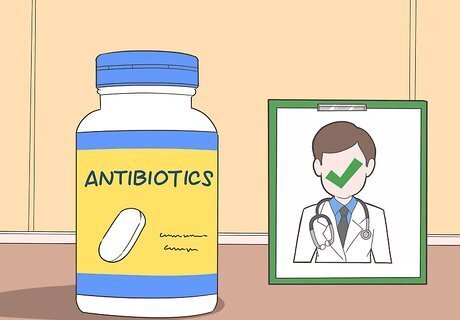
Take antibiotics. Visit your doctor to get a prescription for antibiotics. Diverticulitis occurs when the diverticula (small pockets in the colon) become infected. This can only fully be treated with antibiotics, or else the infection will continue to spread. Follow the package directions with your antibiotics; they typically involve taking a pill orally at least once a day, but this will vary depending on your prescription.
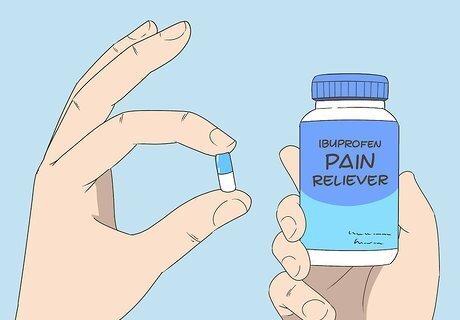
Take pain relievers. Most people suffering from diverticulitis experience abdominal pain and cramping. Although this won’t go away until the infection clears up, you can take pain medication to help reduce the pain in the meantime. Look for ibuprofen, acetaminophen, or naproxen in low doses so that you can take a bit whenever you experience a flare-up of pain.

Try an herbal treatment. Some people have claimed that certain herbs expedite the healing process involved in ridding your body of infection, and also help to reduce any pain or discomfort you may be feeling. Look for teas or supplements containing chamomile or slippery elm, two herbs commonly used for stomach problems. If nothing else, drinking a hot glass of tea is soothing and can ease any cramping you’re experiencing in your stomach.

Get acupuncture. Although it may sound strange to any non-acupuncturists, acupuncture can help relieve certain pressure points that cause pain or pressure in your abdomen. Find a local acupuncturist and see what they can do for your diverticulitis. Although this won’t help to heal the infection at all, it should make you more comfortable.
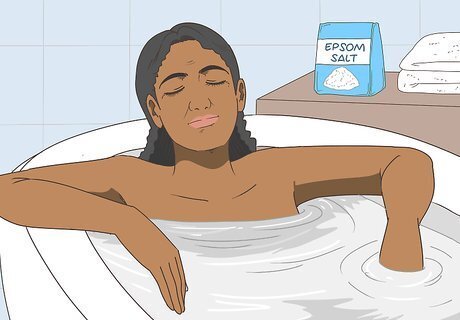
Do a bit of hydrotherapy. Hydrotherapy is pretty straightforward - it involves using water as a means of treating your discomfort. There are a few different hydrotherapy techniques you can try at home. Take a warm bath with Epsom salts, or use a hot water compress on your abdomen to loosen up the muscles and reduce your pain.
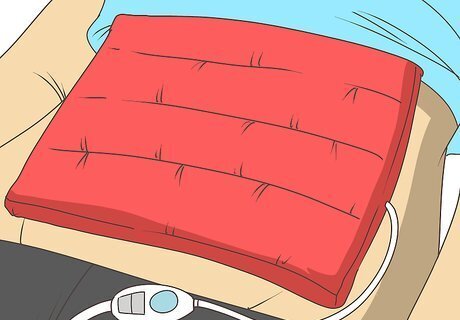
Apply a heating pad to your abdomen. A heating pad can also help alleviate pain caused by an episode of diverticulitis. Try lying down with the heating pad on your abdomen until the pain subsides. Be careful not to fall asleep with the heating pad on.
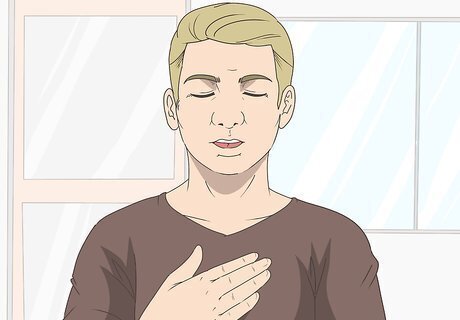
Try using some relaxation techniques. Relaxation techniques can help make the pain you're feeling more manageable. A couple relaxation techniques you can try are: Meditation. Find a quiet, comfortable place to sit and meditate for 15 minutes. Deep breathing. Lie down somewhere quiet and comfortable and take slow, deep breaths while focusing on your breathing.
Understanding Possible Complications
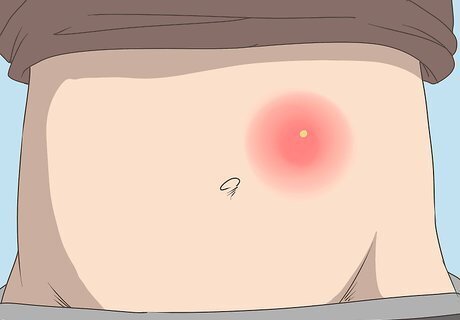
Watch out for abscess formation. If you experience a bout of diverticulitis without antibiotic treatment, the infection may spread into a pustule or abscess. Typically, you’ll experience more extreme pain, a high fever, and a high white blood cell count. Treatment for a diverticulitis episode turned abscess is a catheter that is inserted through the stomach into the abscess, which drains the abscess over several days.
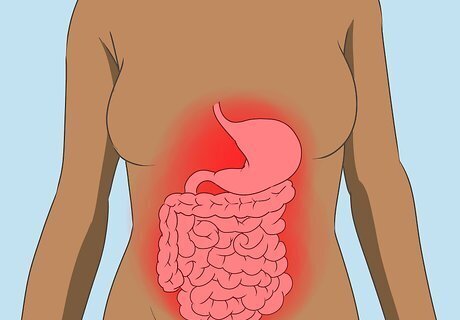
Be aware of peritonitis. If you do end up getting an abscess that doesn’t get treated, the next infection level is peritonitis. This is when the infection/abscess spreads from beyond the pustule to encompass the entire lower portion of the large intestine. Typically, people with peritonitis will experience a high fever, illness with vomiting, abdominal pain, and low blood pressure. The only treatment is a course of vigorous antibiotics and surgery to remove the infected portion of intestine.
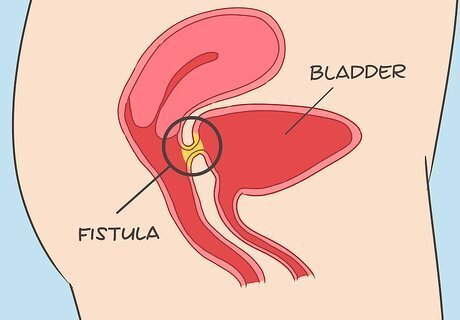
Know about fistula formation. If you have a bad case of diverticulitis, one possibility is that instead of the infection spreading to a larger portion of your colon, it could spread to adjacent areas of your body such as your bladder or skin. This has similar symptoms to peritonitis, but can only be identified and treated by a doctor. Treatment involves antibiotics at least, but often surgery as well.
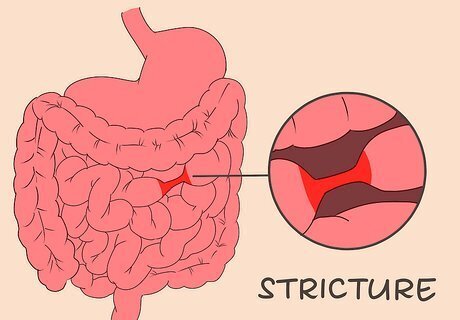
Understand stricture formation. This is one of the rarer side-effects of diverticulitis; if you experience the infection which goes untreated, scar tissue may form and narrow a portion of the colon. This narrowing is called a ‘stricture’, and can prevent waste from passing through. The treatment for stricture formation is typically surgical, depending on the scope of the problem.
Preventing Diverticulitis
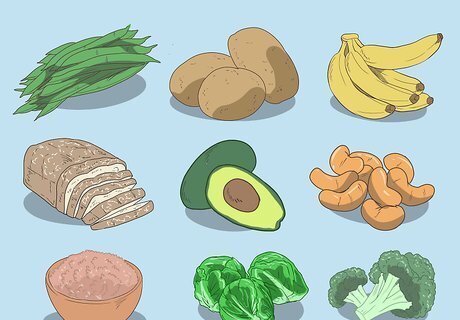
Eat a high-fiber diet. If you consume dietary fiber on a daily basis, your body will be able to push waste through your colon in an efficient manner, preventing it from building up in the small diverticulos sacs that develop. Fruits and vegetables are both very high in dietary fiber, along with beans, whole grains, and brown rice. These foods all have other natural benefits beyond preventing diverticulitis, making them helpful to add to your diet anyway. Don’t begin eating fiber until after you’ve recovered from an episode of diverticulitis.
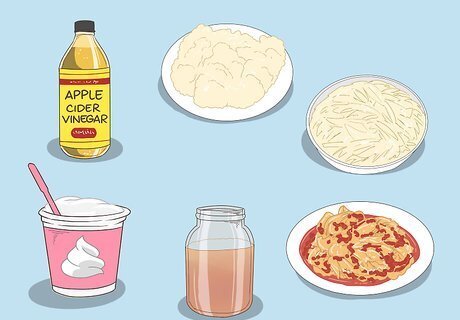
Consume more probiotics. Because the infection that causes diverticulitis is a result of harmful bodily bacteria, some doctors have theorized that eating more healthy bacteria (probiotics) can cleanse your colon and prevent an infection. Probiotics are typically found as live cultures in certain types of yogurt and help to cleanse your stomach and intestines of harmful bacteria, making you feel better when consumed on a regular basis.
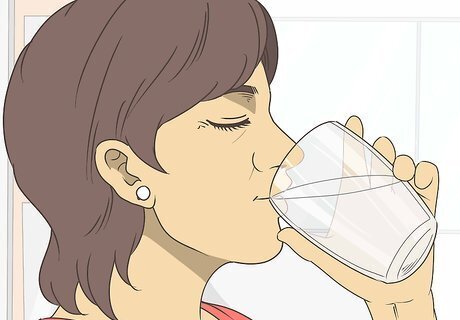
Drink fluids regularly. Water and other fluids, when consumed on a regular basis, have a hugely positive effect on nearly every aspect of your body’s functioning. Aim to drink 8 glasses of water per day, as this will cleanse out harmful bacteria and help provide energy to your body .
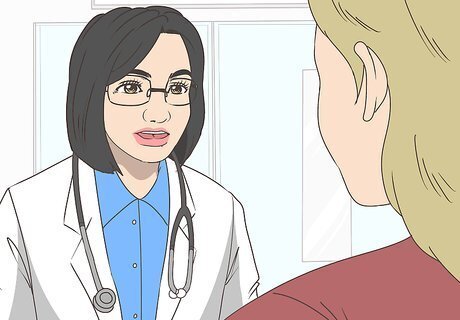
Visit your doctor regularly. Once you’ve been diagnosed with diverticular disease, you should monitor your colon to help prevent future episodes. This can also help to prevent more serious side effects from occurring (see the aforementioned). Aim to visit your doctor about two months after your first episode, and look into getting a colonoscopy or barium enema x-ray. These will both be able to show any issues that might occur, allowing you to seek treatment before it’s too late.
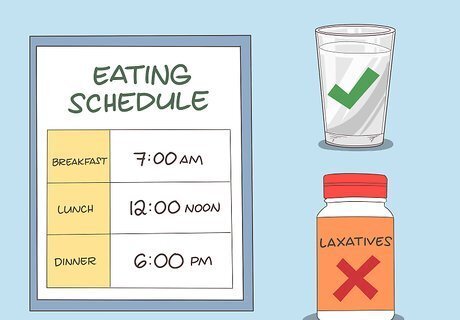
Practice healthy bowel habits. Healthy bowel habits can help prevent diverticulitis. Try to eat at the same times every day, and make sure you're drinking enough water. Also, avoid straining yourself during bowel movements or using enemas and laxatives, unless directed otherwise by your doctor.















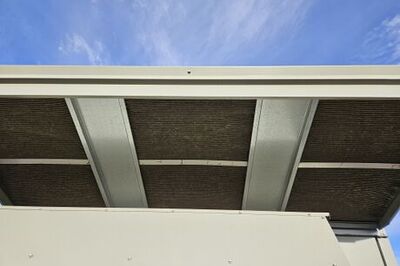
Comments
0 comment